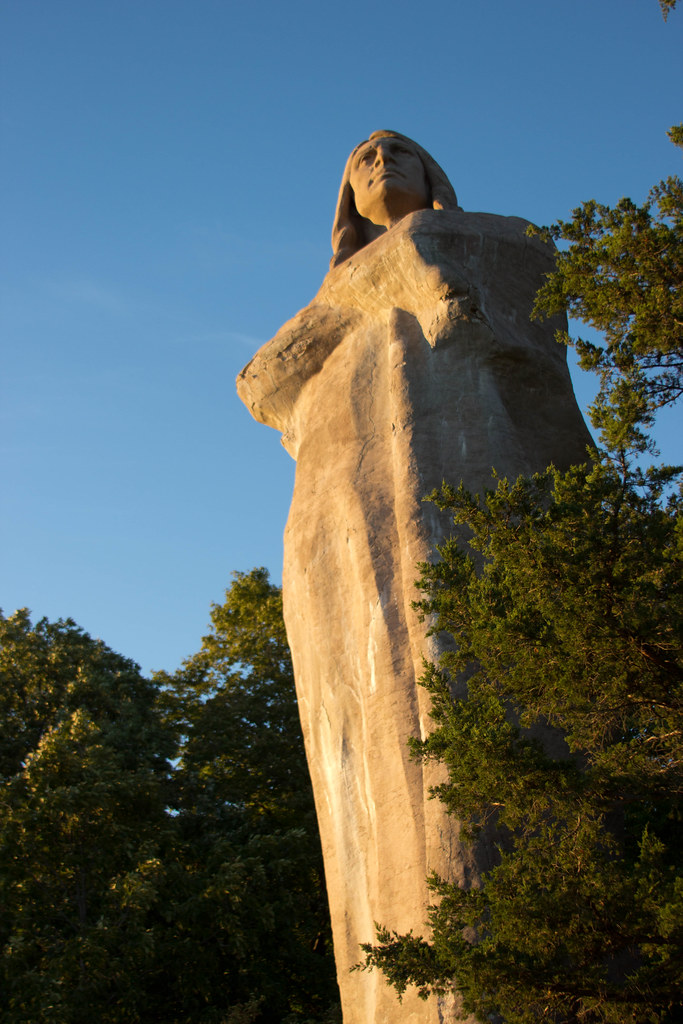
FEATURE image: Capt. A. Lincoln, Illinois Volunteer Militia, Black Hawk War, 1832, bronze, 1930. by Leonard Crunelle (1872-1944), Dixon, Illinois. The large bronze statue was the first prominent public depiction of the 16th U.S. president as a young adult man. Author’s photograph, 6/2017 4.70mb.


Illinois in the early 1830s was the edge of the American frontier and virtually wilderness. The Native American tribes were being expelled from the northern tier of the state established in 1818 by ceding their lands to the U.S Federal Government. Most of the Native Americans were pushed out of the state by treaty by the end of the 1820s. This quickly changed the landscape of a rapidly growing Illinois by way of new arrivals of settlers from the East in the 1840s and 1850s. Settlers were accompanied by ambitious commercial projects such as transportation canals and, even more impressive, the railroads, all of which worked to open up the Middle West of the United States to global markets and industrial prosperity.
Abraham Lincoln, born in a Kentucky log cabin in 1809, was 21 years old when he arrived into Illinois in 1830 with his family from Indiana. During the 1832 Black Hawk War, the 23-year-old Abe Lincoln lived in New Salem, Illinois, and was elected captain in the Illinois National Guard. The bronze statue, cast in 1930, of Lincoln in Dixon, Illinois, depicts for the first time a yet untapped aspect of the 16th president’s life and career for his ever-expanding public iconology – that of the youthful adult Lincoln starting out in his career.
Lincoln enlisted in the Illinois Volunteers on April 21, 1832 near Richland Creek in Sangamon County which was located about halfway between New Salem and Springfield, Illinois. The next day, Lincoln mustered into state service at Beardstown, Illinois, about 40 miles to the west on the Illinois River.
The 6-foot-4-inch Lincoln was elected captain, a position he said he was both surprised and proud to receive.
Lincoln mustered into U.S. service near Janesville, Wisconsin on May 3, 1832. He mustered out on May 27, 1832 in Ottawa, Wisconsin. Lincoln never fired a shot.
On that same day of May 27, 1832 Lincoln re-enlisted as a private in Captain Iles’ company. When that enlistment expired, Lincoln re-enlisted again in Captain Early’s company.
Lincoln finally mustered out of military service on July 10, 1832 at Whitewater, Wisconsin.
Young Lincoln was stationed in Dixon, Illinois, at Fort Dixon on the Rock River where this statue — unveiled in late September 1930 — stands. The sculptor is French-born Leonard Crunelle (1872-1944).

Crunelle’s immigrant family arrived in Illinois in 1889 and settled in Decatur, about 40 miles east of Springfield, Lincoln’s hometown. When Crunelle worked in the local mines, he started making fired clay sculptures. His work was brought to the attention of prominent American sculptor and teacher Lorado Taft (1860-1936) who brought young Crunelle to Chicago to study at The School of the Art Institute of Chicago. At the same time, Crunelle began to do decorative work for the Chicago World’s Fair in 1893.

The bronze sculpture of Lincoln – who later as a lawyer and politician expressed pride in his brief military service – is one of the first attempts to depict the Great Emancipator in his youth. Though Crunelle had made a statue called Lincoln the Debater for display in a park in Freeport, Illinois, in 1929 the slightly later Capt. A. Lincoln in Dixon, Illinois, depicted Lincoln more than half the great debater’s age.









